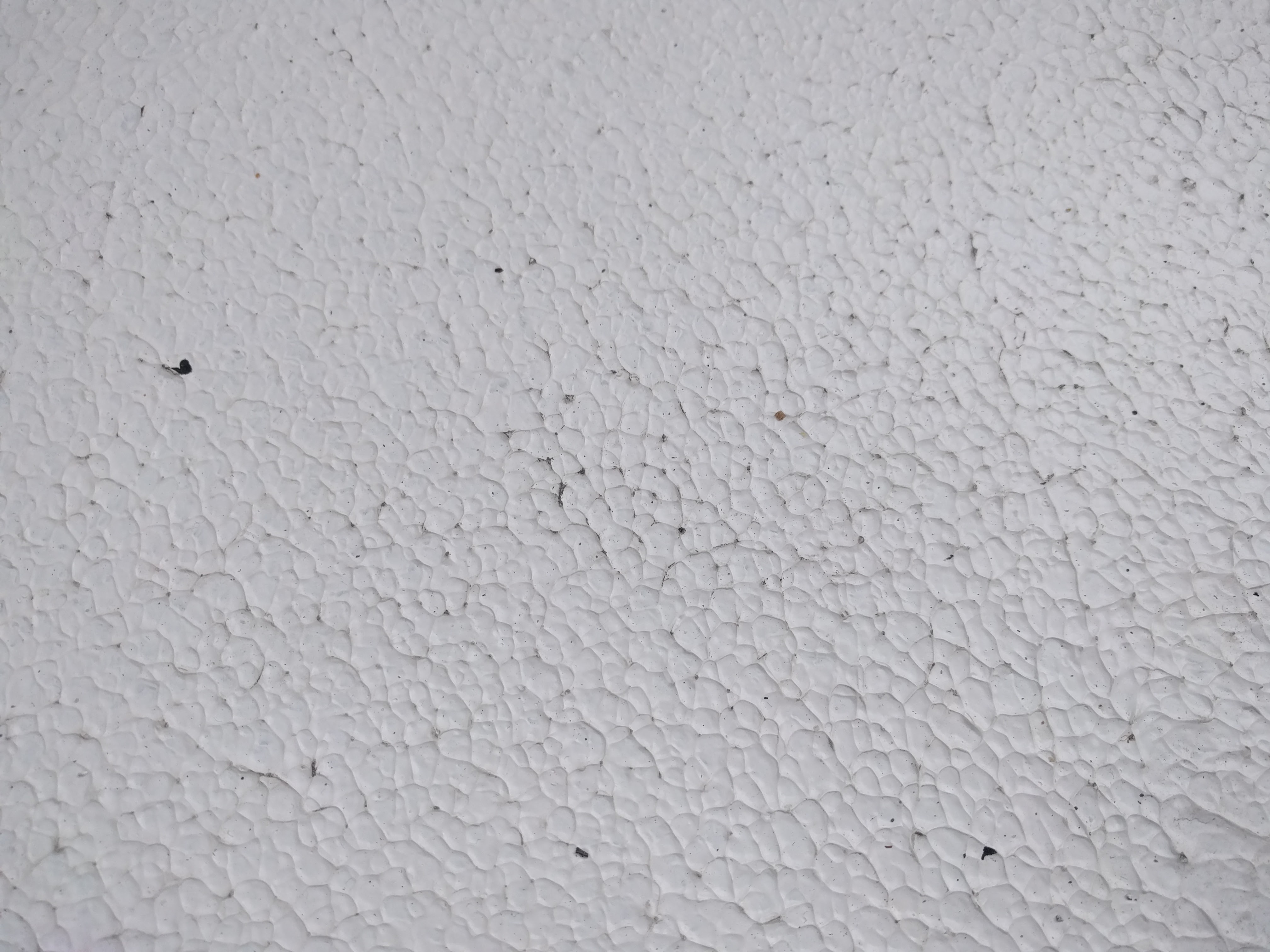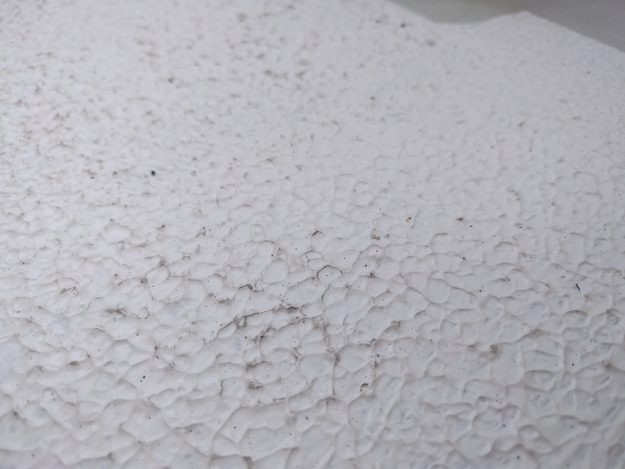Recently we passed the 2 year anniversary of owning our boat – two years since Feb 14 2015. It’s amazing to think how far we’ve come in that time – with many major projects completed (a rerig, rudder removal + steering system repair, rebedding lots of deck hardware, etc), plus two major summer cruises (lower west coast of Vancouver Island, and Seattle to the Broughtons and Back), along with lots of weekend sails in between those.
Somehow that 2 years feels like much longer.
One project we still haven’t completed is redoing the nonskid on the deck. In some areas the old non-skid was literally worn away – it was so smooth behind the helm that when sailing upwind our feet would gradually slide down the floor until we wedged them against something. So before leaving for our 3-month sail last spring, we painted the cockpit with KiwiGrip. That was a great help – but there are still more areas to do.
It would seem that choosing the best non-skid paint would be simple, but it’s not. Any time there are 5 or more product choices available for one purpose in the boating world, it’s a good sign there’s no clear winner. If it were a simple answer with a clearly superior option, there would only be 1 or 2 products, not 5-10.
There were three things we wanted from a non-skid paint:
- The non-skid part (not slip and slide around on it)
- Look reasonably nice
- Not hurt our butts or bare feet when we sit or stand on it.
The options are too long to fully cover here (there’s a great, detailed article here on BWI.org [PDF] from Nov 2013 where they actually did testing of 9 different paint options). But I can add a bit of first hand experience, and am looking for others’ input.
KiwiGrip
We gave KiwiGrip a try with the cockpit, but are not happy with it. The reviews I found online were mostly great, and the easy application is a selling point. It just rolls on with a special textured roller, and it provides great grip. I was worried the sharp ridges would be uncomfortable to sit or walk upon but we haven’t found this to be a problem.
The problem is the ridges of the paint hold dirt extremely easily, so that our cockpit became grimy looking much quicker than before. And it’s very difficult to clean – even scrubbing with a hard bristle brush and soap didn’t remove all the dirt stuck in the ridges. Previously we could clean our deck while cruising pretty easily using just a dustpan and broom.
The cockpit is the quickest accumulator of dust and dirt on a cruising boat. Since applying KiwiGrip, it’s never really ever gotten back to looking good. Cosmetics is the least important requirement, but if we’re going to go to all the trouble of repainting, it might as well look good.
Even the non-skid function of the KiwiGrip hasn’t performed as well as expected. When wet (a common occurrence in Seattle!), a few times while leaning forward my shoes have spontaneously lost their grip on the nonskid and I’ve flown forward.

Brand new KiwiGrip, only a week after painting it, with very little foot traffic in the cockpit. This isn’t too bad, but after a month it gets much dirtier – to be expected in any cockpit, but the problem is it stays that way – scrubbing doesn’t remove the dirt.

Other Options
So now we’re looking for a new non-skid to try in the rest of the cockpit, and eventually the entire deck.
There are a confusing array of other options, but they fall into 3 or 4 main categories:
- Marine topcoat paints with a synthetic non-skid additive – ex, Awlgrip Topcoat with AwlGrip GripTex or Interlux Brightside with Interlux Intergrip.
- Marine topcoat paints with other types of non-skid additive like silica beads or ground up shells.
- 1-Part compound non-skid paints: Interlux Interdeck, or Jamestown Distributor’s Totalboat TotalTread.
- Adhesive traction strips / panels. (Personally ruled this one out – for various reasons I really don’t like the idea of adhesive traction panels covering the entire deck).
We’re leaning towards trying Interlux with Intergrip this spring – but, the reviews of Totalboat TotalTread are also sounding really good.
Your Experiences?
If you’ve had a good non-skid experience recently, please comment below. Especially if your boat is in Seattle and has a recently done non-skid, it’d be great to take a look at it. And if anyone here would like a 3/4 gallon can of KiwiGrip, we’re looking to give it away for cheap!

I’ve got a painted deck (wooden boat) AWLgrip topcoat with special sand-like stuff that you can either mix in to the paint and just roll it on, or alternatively sprinkle it on the wet paint. I went with mixing it in to the paint and it rolled on smoothly and consistently. It is fine to walk on in bare feet – and not too scratchy on your clothes when you sit down.
I also have the stick on non-skid on my stairs and on the front hatch. This looks ok until the edges begin to curl.
My cockpit floor is a dark grey non-skid type rubber. It is quite hard and gets hot to walk on in the summer. Scrubs up quite well – apart from the paint splashes that are on there (my fault…)
I probably have some photos of it somewhere if you are interested in having a look. Let me know your email address. 🙂
Do you remember what kind of sand-like additive you used? With the 2-part options I’ve heard of bad results with the sprinkle sand on top method but good results with the premix method. But I’m wondering whether that’s really any better than the 1-part options.
I don’t have the tin any more as I used it all up, and I agree – shaking it on wouldn’t get a nice consistent result. I am pretty sure it was the same brand as the tin of paint – so AWL and they were white sand crystals. )
Following this as I need to redo my non-skid as well and was thinking Kiwi-grip